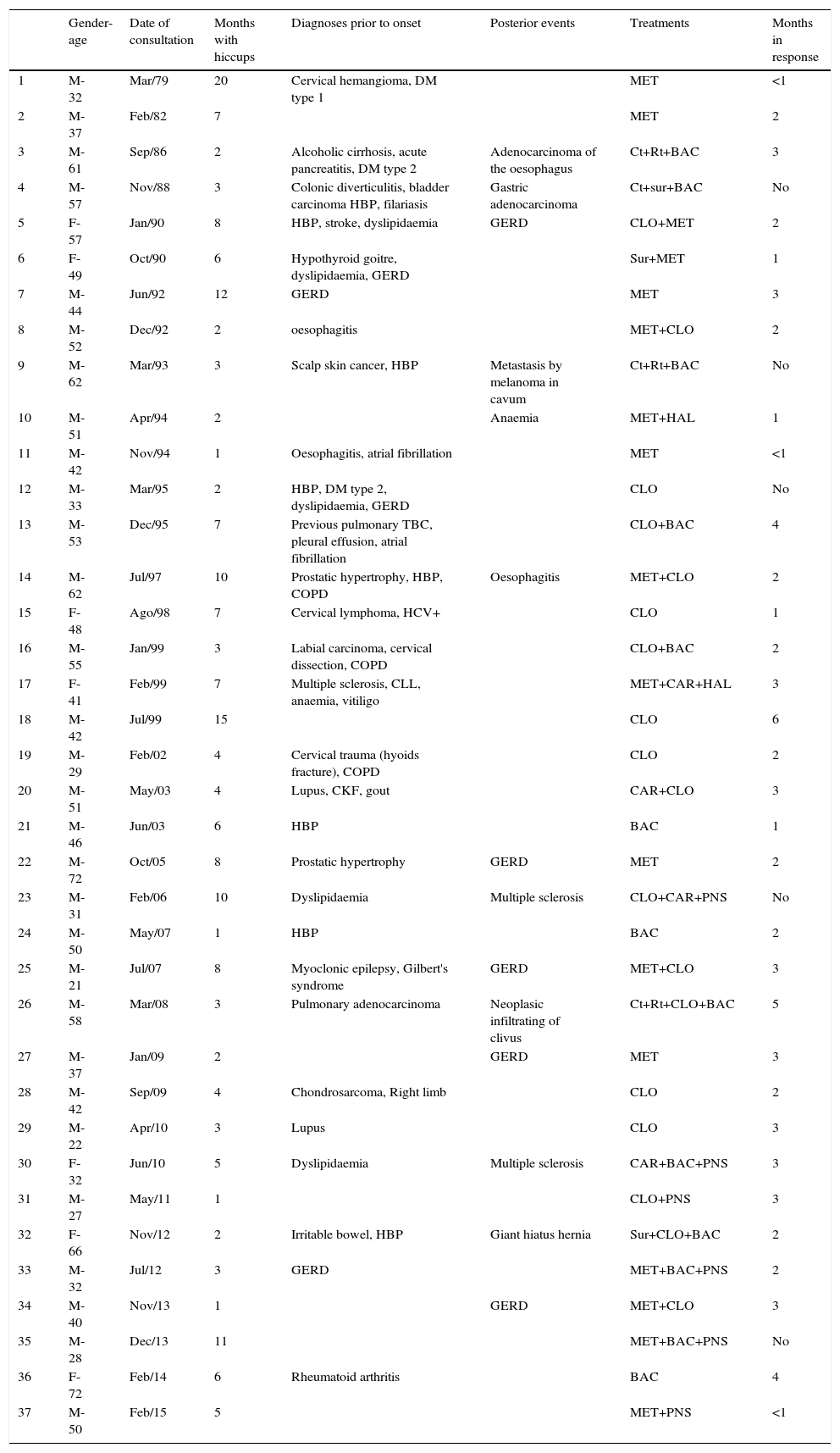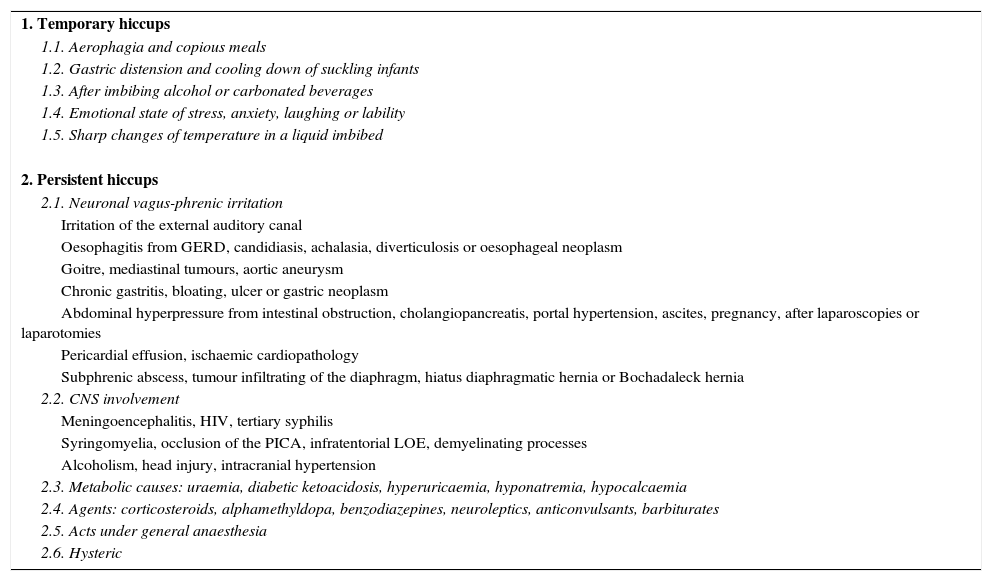Hiccup crises are generally benign and self-limiting, but longer episodes affect quality of life and must be treated. There are recognisable causes that otorhinolaryngologists must know and be aware for diagnosis and therapeutic alternatives. The main expression is a spasmodic glottic noise with characteristic neck alterations.
Patients and methodsThis was a retrospective study from 1979 with patients suffering persistent or recurrent hiccups. Chronobiology, comorbidity, findings from explorations, therapies and outcomes were noted. Thirty-seven patients were studied (mean age, 45.5±13.5 years; 30 males), with persistent hiccups in 23 (62%).
ResultsA potential associated aetiology was observed in 24 cases (65%): oesophageal disorders–mainly gastroesophageal reflux–were detected in 14 cases and concomitant oncological disease was found in 8. Only 3 cases were admitted for surgery due to these findings. Therapeutic strategies with metoclopramide were used in 18 subjects, chlorpromazine in 17 and baclofen in 13, while carbamazepine or haloperidol were used in a minority. Phrenic nerve stimulation was employed in 6 patients. Hiccups disappeared in 32 cases. Out of 22 cases for which follow-up was possible, the hiccups recurred in 5 subjects (the subjects requiring new therapies) and 11 patients died.
ConclusionsChronic hiccup represents a multidisciplinary challenge that includes potential head and neck affection, a diagnostic schedule for ruling out causes, frequent base oesophageal alterations and high incidence of malignant neoplasm. Prokinetic and neuroleptic agents with antidopaminergic and anticholinergic effects are the pillars of its treatment.
Las crisis de hipo suelen ser autolimitadas y benignas, pero los episodios prolongados alteran la calidad de vida y requieren asistencia, ya que existen causas identificables que el otorrinolaringólogo debe conocer para su diagnóstico y tratamiento. Su manifestación última es un ruido glótico espasmódico con alteraciones cervicales características.
Pacientes y métodosDesde 1979 se revisaron todos los casos que consultaron por hipo persistente o recidivante, anotando cronobiología, patología concomitante, resultados de las exploraciones, tratamiento y respuestas al mismo.
ResultadosSe asistieron 37 pacientes con una edad media de 45,5±13,5 años, de los cuales 30 eran varones; 23 pacientes (el 62%) presentaron hipo persistente. En 24 casos (el 65%) se evidenció una causa potencialmente asociable: enfermedades del esófago en 14 —la mayoría reflujo gastroesofágico— y en 8 se apreció o descubrió patología oncológica concomitante. Solo 3 casos fueron intervenidos como resultado de los hallazgos efectuados. Los protocolos de tratamiento incluyeron metoclopramida en 18 sujetos, clorpromazina en 17 y baclofeno en 13, pero también carbamazepina o haloperidol. Se empleó neuroestimulación del nervio frénico en 6 pacientes. El hipo desapareció en 32 casos. De los 22 sujetos en los que se pudo efectuar seguimiento, se constató recidiva en 5 —precisando por ello nuevas terapias— y 11 fallecieron.
ConclusionesEl hipo crónico implica un reto multidisciplinar con potencial afectación en cabeza y cuello, una sistemática diagnóstica de descarte, frecuente patología de base esofágica y una incidencia de neoplasia maligna alta. Los agentes procinéticos y neurolépticos con efecto antidopaminérgico y anticolinérgico suponen la base del tratamiento.








